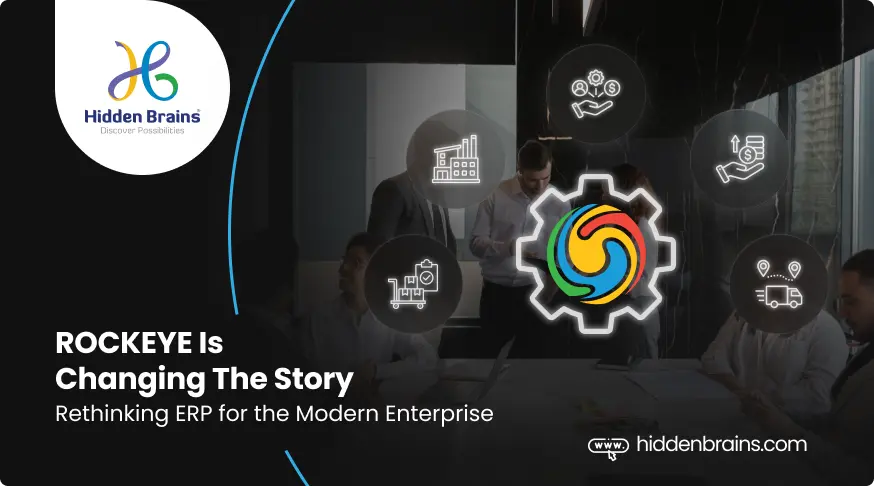Software architecture is one of the critical steps in successful application development. A well-conceived architecture defined by an Enterprise App Development Company can help to streamline the development process, reduce the risk of project failure, and facilitate the reuse of code. There are a number of different types of software architectures, and each has its own strengths and weaknesses.
It is no secret that software architecture can decide between a successful project and one that fails. Poorly designed systems are costly to maintain, difficult to scale, and prone to failure. At the same time, you should not forget that the latest or most popular technology in the market will not always mean it will bring the best results. There are many factors to consider before making such a decision, including the cost and ease of use.
Software architecture is the blueprint that must be worked upon much before laying the foundation stone for development journey. It is the plan that will make or break your application. And as such, it is a critical piece of the puzzle that should be made as strong as possible.
Does it get on your nerves just by thinking about it?
Hold on!
To help you avoid the blunders, we have brought you this blog piece so you can make the right choice while selecting the exemplary software architecture for your app.
Why do You Need Software Architecture for Your Enterprise App?
If you haven’t worked with software architecture before, you may not know what software architecture is. Here is the definition: a mobile application development company follows this process to design and organize the software that makes an application function properly. Architectural patterns are reusable solutions to common design problems. They provide a structure that promotes reusability and extends software maintainability.
The software must have the capability to handle different requests without a glitch, while being scalable, modular, and maintainable. These requirements often conflict with the desire to make software hard to use because it makes it difficult for users to learn how to use it and leverage its capabilities. The software should therefore be configurable so that it is easy to change its behavior to suit the user’s needs. It should also be easy to add new features without modifying the core behavior of the application.
Are you looking to develop your own Enterprise Application?
A Quick Tour of the Architecture Styles
Traditional 3-tier Application Architecture
We all know about the 3-tier application architecture—it is a client-server architecture with a typical structure consisting of the presentation layer, application layer, and database layer.
It has a user interface, business/data access logic, and data access. Many enterprise applications were created using the simple 3-tier application architecture.
What is the issue with 3-tier application architecture?
Simply speaking, the 3-tier application model is outdated. It was designed for application development before the proliferation of public cloud and mobile applications and has had difficulty adapting to the cloud.
Over time, an application can become too large and complex to make frequent changes. Not only that, but it also requires the maintenance of at least three layers of hardware and software, which can be inefficient for the business.
The 3-tier application model is also frequently called a monolithic architecture. These days, we have multiple new architecture models, and below, we will examine a few that are available now in the cloud era.
N-tier
N-tier is a traditional architecture for enterprise applications. Dependencies are managed by dividing the application into layers that perform logical functions, such as presentation, business logic, and data access. A layer can only call into layers that sit below it. However, this horizontal layering can be a liability. It can be hard to introduce changes in one part of the application without touching the rest of the application. That makes frequent updates a challenge, limiting how quickly new features can be added.
N-tier is a natural fit for migrating existing applications that already use a layered architecture. For that reason, N-tier is most often seen in infrastructure as a service (IaaS) solutions, or applications that use a mix of IaaS and managed services.
Web-queue-worker
For a purely PaaS solution, consider a Web-Queue-Worker architecture. In this style, the application has a web front end that handles HTTP requests and a back-end worker that performs CPU-intensive tasks or long-running operations. The front end communicates to the worker through an asynchronous message queue.
Web-queue-worker is suitable for relatively simple domains with some resource-intensive tasks. Like N-tier, the architecture is easy to understand. The use of managed services simplifies deployment and operations. But with complex domains, it can be hard to manage dependencies. The front end and the worker can easily become large, monolithic components that are hard to maintain and update. As with N-tier, this can reduce the frequency of updates and limit innovation.
Top Software Architecture Patterns
Layered Architecture
A layered architecture is an architecture in which client-server functionality is separated into multiple modules within the Mobile App Development Services. Each of these has a single responsibility but works in concert with others in a larger team to achieve a broader goal: scalability and fault tolerance.
Simply put, a layered architecture is a set of components that can be arranged in more than one way and still work together. A layered architecture is self-contained and resilient because it can be expanded and modified without modifying the system. A layered architecture is flexible because it uses conventions open to expansion and development.
Event-driven Architecture(EDA)
Event-Driven Architectures (EDA) use a publish-subscribe (pub-sub) model, where producers publish events, and consumers subscribe to them. The producers are independent from the consumers, and consumers are independent from each other.
Consider an event-driven architecture for applications that ingest and process a large volume of data with very low latency, such as IoT solutions. The style is also useful when different subsystems must perform different types of processing on the same event data.
If properly used, it can provide a significant increase in agility, cost savings, and operational benefits. The distributed serverless EDA can execute code known as functions that scale automatically in response to a REST API or an event trigger.
For the serverless model, there is no server management needed. The serverless model is also quickly scalable (so quick updates and deployment are possible) and it is stateless.
Types of Serverless
- Functions-as-a-Service (FaaS): Upload pieces of functionality to the cloud and let these pieces be executed independently.
- Backend-as-a-Service (BaaS): Utilize services from a third party, such as application management, database management, and cloud storage.
- Mobile-backend-as-a-Service (MBaaS): Functions for mobile applications
Here are some of the currently available cloud serverless services from different cloud providers:
Micro kernel Architecture
The Micro kernel Architecture allows enterprise application development services to add pluggable features to an erstwhile version of the software providing for extensibility. This flexibility is especially beneficial to organizations that want to add new features or upgrade an existing application without recompiling or redeploying the software with a Mobile Application Development Company USA. This architecture also allows for faster development times, as new features can be added without disrupting the existing applications.
It is most appreciated for its high performance while maintaining customizability. This allows applications to be tailored specifically to the user’s needs without bogging down the system with unnecessary features.
Microservices Architecture
If your application has a more complex domain, consider moving to a Microservices architecture. A microservices application is composed of many small, independent services. Each service implements a single business capability. Services are loosely coupled, communicating through API contracts.
Each service can be built by a small, focused development team. Individual services can be deployed without a lot of coordination between teams, which encourages frequent updates. A microservice architecture is more complex to build and manage than either N-tier or web-queue-worker. It requires a mature development and DevOps culture. But done right, this style can lead to higher release velocity, faster innovation, and a more resilient architecture.
The Space-based Architecture pattern is designed to overcome high load by splitting up the processing and the storage between multiple servers. This can be achieved by using a microkernel architecture. This architecture consists of several servers that handle all the processing and storage tasks. This makes the system more resilient to high loads and allows the system to grow without becoming overloaded.
Client-server Architecture
As the name suggests, communication between a client and server is facilitated by the client-server architecture. This architecture can be used irrespective of whether the client and server are under the same network or not. This has several advantages, such as allowing a company to extend its services to customers not located in the exact location of its headquarters.
A client-server architecture is quite flexible, as a single server can support multiple clients, or a single client can use multiple servers. This type of architecture is commonly used in businesses where numerous clients need to access a single resource. The advantage of using a client-server architecture is that it is easy to scale up or down. If the number of clients increases, the server can be increased in size.
Architecture styles as constraints
An architecture style places constraints on the design, including the set of elements that can appear and the allowed relationships between those elements. Constraints guide the “shape” of an architecture by restricting the universe of choices. When an architecture conforms to the constraints of a particular style, certain desirable properties emerge.
By adhering to these constraints, what emerges is a system where services can be deployed independently, faults are isolated, frequent updates are possible, and it’s easy to introduce new technologies into the application.
Before choosing an architectural style, make sure that you understand the underlying principles and constraints of that style. Otherwise, you can end up with a design that conforms to the style at a superficial level, but does not achieve the full potential of that style. It’s also important to be pragmatic. Sometimes it’s better to relax a constraint, rather than insist on architectural purity.
The following table summarizes how each style manages dependencies, and the types of domains that are best suited for each.
| Architecture style | Dependency management | Domain type |
| 3-Tier / N-tier | Horizontal tiers divided by subnet | Traditional business domain. Frequency of updates is low. |
| Web-queue-worker | Front and backend jobs, decoupled by async messaging. | Relatively simple domain with some resource intensive tasks. |
| Microservices | Vertically (functionally) decomposed services that call each other through APIs. | Complicated domain. Frequent updates. |
| Event-driven architecture | Producer/consumer. Independent view per sub-system. | IoT and real-time systems. |
Consider challenges and benefits
Constraints also create challenges, so it’s important to understand the trade-offs when adopting any of these styles. Do the benefits of the architecture style outweigh the challenges, for this subdomain and bounded context.
Here are some of the types of challenges to consider when selecting an architecture style:
- Complexity. Is the complexity of the architecture justified for your domain? Conversely, is the style too simplistic for your domain? In that case, you risk ending up with a “big ball of mud”, because the architecture does not help you to manage dependencies cleanly.
- Asynchronous messaging and eventual consistency. Asynchronous messaging can be used to decouple services, and increase reliability (because messages can be retried) and scalability. However, this also creates challenges in handling eventual consistency, as well as the possibility of duplicate messages.
- Inter-service communication. As you decompose an application into separate services, there is a risk that communication between services will cause unacceptable latency or create network congestion (for example, in a microservices architecture).
- Manageability. How hard is it to manage the application, monitor, deploy updates, and so on?
What More to be Expected?
As technology is evolving rapidly, plenty of other architectural styles are equally interesting and more befitting for your project.
However, understanding the pattern is the most crucial thing when integrating the right architecture.
The next step is to develop a good strategy for identifying and avoiding them. A development expert can help you figure out what to do next.
Is it that easier to find such an incredible pool of engineers who can help improve security, reliability, and features, ensuring your business application scales and remains secure?
Fret not!
Hidden Brains-a mobile app development company in USA, is Here!
Get in touch with us.
We are always happy to answer any questions about our services if you need a team of developers, engineers, technical architects, and PMs. We can navigate the complexities of software design and the future growth of your product.
Keep watching this space for more tech-filled information coming your way!






























































































![Sales & Distribution [Oil & Gas] Sales & Distribution [Oil & Gas]](https://www.hiddenbrains.com/blog/wp-content/themes/blankslate/assets/images/sales_and_distribution-icon.74d08193.svg)

![Fluid Terminal Management [Oil & Gas] Fluid Terminal Management [Oil & Gas]](https://www.hiddenbrains.com/blog/wp-content/themes/blankslate/assets/images/fluid_terminal_management-icon.4b3a27a4.svg)































![Sales & Distribution [Oil & Gas] Sales & Distribution [Oil & Gas]](https://www.hiddenbrains.com/blog/wp-content/themes/blankslate/assets/images/sales_and_distribution-icon.74d08193.svg?1.0.0)
![Fluid Terminal Management [Oil & Gas] Fluid Terminal Management [Oil & Gas]](https://www.hiddenbrains.com/blog/wp-content/themes/blankslate/assets/images/fluid_terminal_management-icon.4b3a27a4.svg?1.0.0)






























































































































































































